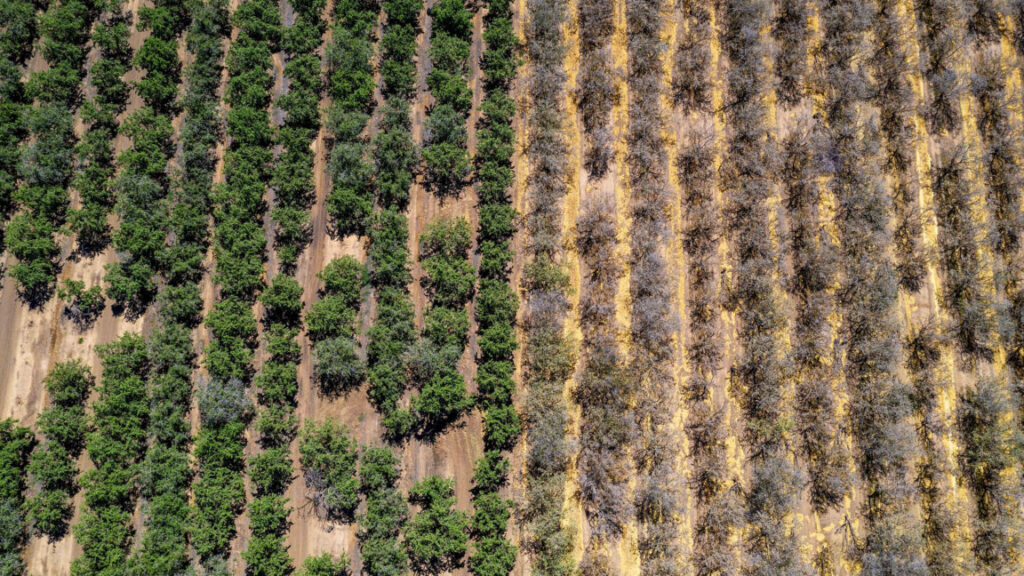
Spreading out the research
Ninety-eight miles north of Loya’s farm, along a dead flat and endlessly beige expanse of road that skirts the White Sands Missile Range, more desalination projects burble away at the Brackish Groundwater National Desalination Research Facility in Alamogordo, New Mexico. The facility, run by the Bureau of Reclamation, offers scientists a lab and four wells of differing salinities to fiddle with.
On some parched acreage at the foot of the Sacramento Mountains, a longstanding farming pilot project bakes in relentless sunlight. After some preemptive words about the three brine ponds on the property — “They have an interesting smell, in between zoo and ocean” — facility manager Malynda Cappelle drives a golf cart full of visitors past solar arrays and water tanks to a fenced-in parcel of dust and plants. Here, since 2019, a team from the University of North Texas, New Mexico State University and Colorado State University has tested sunflowers, fava beans and, currently, 16 plots of pinto beans. Some plots are bare dirt; others are topped with compost that boosts nutrients, keeps soil moist and provides a salt barrier. Some plots are drip-irrigated with brackish water straight from a well; some get a desalinated/brackish water mix.
Eyeballing the plots even from a distance, the plants in the freshest-water plots look large and healthy. But those with compost are almost as vigorous, even when irrigated with brackish water. This could have significant implications for cash-conscious farmers. “Maybe we do a lesser level of desalination, more blending, and this will reduce the cost,” says Cappelle.
Pei Xu has been co-investigator on this project since its start. She’s also the progenitor of a NAWI-funded pilot at the El Paso desalination plant. Later in the day, in a high-ceilinged space next to the plant’s treatment room, she shows off its consequential bits. Like Amrose’s system, hers uses electrodialysis. In this instance, though, Xu is aiming to squeeze a bit of additional fresh—at least freshish—water from the plant’s leftover brine. With suitably low levels of salinity, the plant could pipe it to farmers through the county’s existing canal system, turning a waste product into a valuable resource.